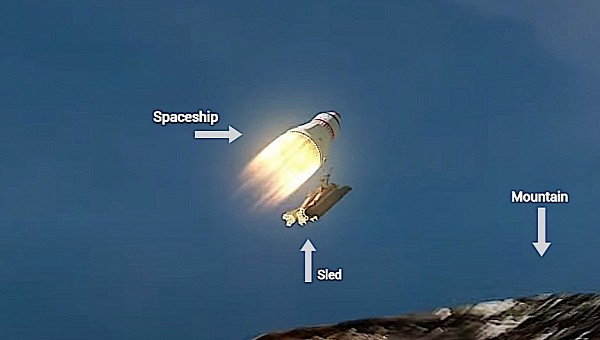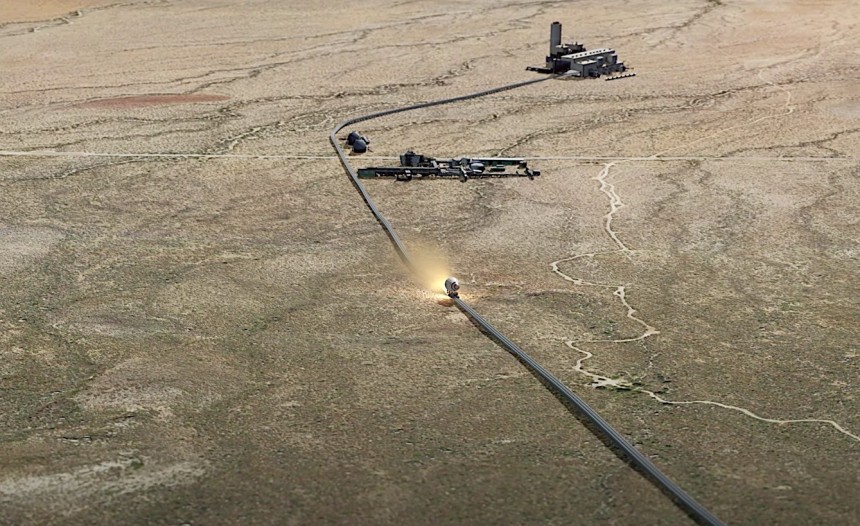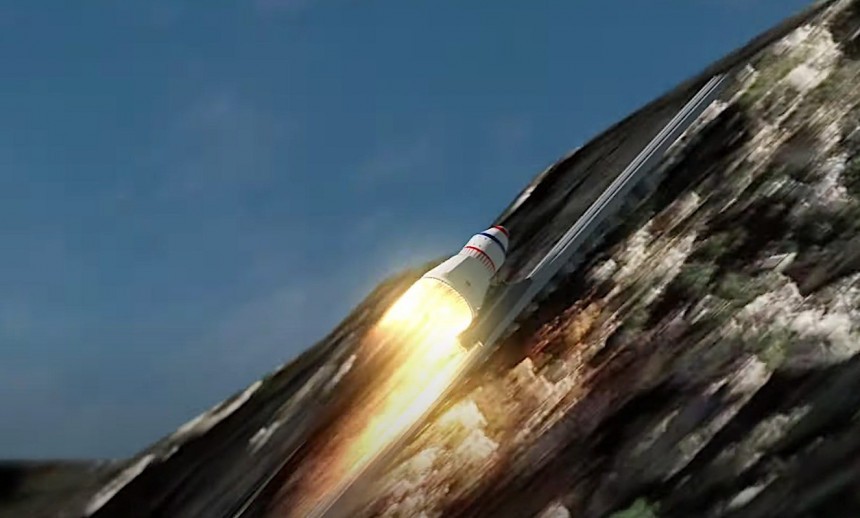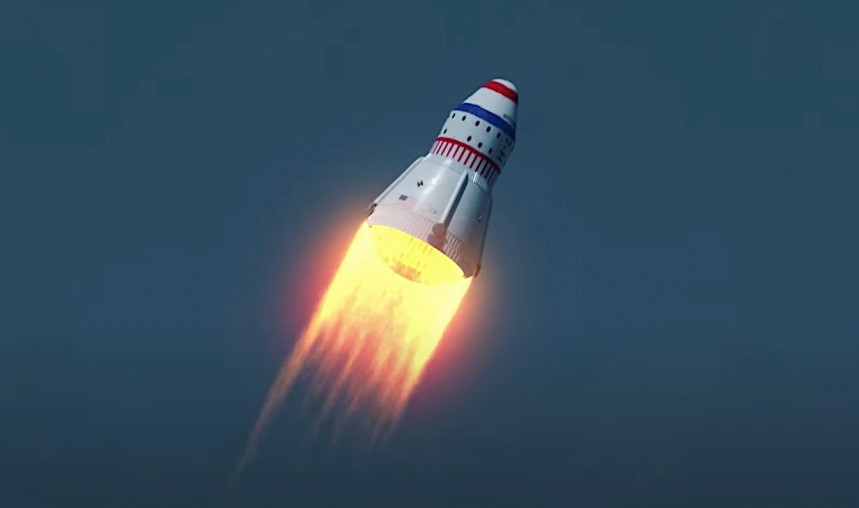When it comes to the vehicles of all shapes and sizes humans use for their daily activities and to pursue various interests, cars are of course the most in the news. Consequently, successful car designers enjoy a sort of star status, and they often are subject to public scrutiny. But if you ask me, rocket scientists should be at least as celebrated.
Space exploration is an important undertaking of the human race, but let’s face it, not all humans on this planet are interested that much in it, given how it doesn’t directly and immediately impact them. But in the select circles of people with a passion for space, the name Philip Bono speaks volumes.
The American engineer was a prominent personality of the early space program. On the payroll of the Douglas Aircraft Company, he specialized in the design of reusable spaceships and rockets, and it is he, and not Elon Musk, his team, or others, that should be credited with birthing the idea of a recoverable and reusable spacecraft booster.
Bono’s name is tied to some of the craziest spacecraft designs of the era, a list that includes some of the most high-profile ideas like the Saturn Application Single Stage to Orbit (SASSTO), the Reusable Orbital Module, Booster, and Utility Shuttle (ROMBUS), or the Reusable One-stage Orbital Space Truck (ROOST).
Given the technical constraints of the time, and probably because of money, none of his single-stage-to-orbit (SSTO) launch vehicles became a reality. As such, we never got to see these crazy contraptions lift off and do their thing.
Luckily, modern technology and someone with a passion for space tech that was never made are all it takes to make these things become a reality, even if only briefly and in the virtual world. We’ve seen that happen with the SASSTO and ROOST, and now it’s time to have a look at something called Hyperion. And the Hyperion is truly unique.
You see, the vast majority of all space vehicles ever conceived launch in one of just two ways: either straight up from a pad somewhere, or horizontally (and then up) with the help of a carrier vehicle. The Hyperion does neither and uses a sled and a track instead.
Bono envisioned this spacecraft, design-wise, not unlike the space capsules we use today: a conical structure, equipped with a nozzle engine and a heat shield for re-entry. It would have been capable of carrying out transport duties either to orbit or across the planet and would have been capable of moving 18,100 kg (40,000 pounds) of cargo or even 110 passengers.
The takeoff method involved a subsonic sled on top of which the spacecraft needed to be placed, on its side. Once the engine ignited, the sled would move on a cushion of air formed inside a rail.
To be able to launch the thing, the rail would have needed to be at least 3 km long (1.8 miles), more than half of that pinned against a mountain cliff at least 1.7 km high (1 mile) and acting like a ramp. The Hyperion would start at one end of the rail, quickly accelerate as it moved down the rail and up the mountain, and reaching a top speed of 1,100 kph (684 mph) as it separated from both rail and sled.
From this point onward, the whole affair would have been business as usual. The spacecraft would climb to its desired orbit, or travel around the planet to drop off its passengers at the desired destination. At the same time, the sled that helped launch would come crashing down on the other side of the mountain.
As per known specs, the Hyperion would have been capable of carrying 18,100 kg to an orbit 185 km (115 miles) above the surface. For that, the engine needed to pump out 7,840.000 kN of thrust, and a burn of about 300 seconds was required. The fuel of choice for the spaceship was a combination of liquid oxygen and liquid hydrogen.
Sadly, the Hyperion SSTO never left the drawing board. It was not the only spacecraft with such a takeoff method being considered back then, but the cost of this particular project was estimated, as per Astronautix, at $1.5 billion in the 1960s. That would be about $10 billion today.
That makes it incredibly expensive by all standards, and with America focused back in the 1960s on beating the Soviet Russians to the Moon, the project was sidelined like a host of others, never to be resurrected again.
Because it never left the drawing board, the Hyperion was never captured on camera doing its thing, so we had no idea how it might have looked. That changed however, at the end of last week, when animation specialist Hazegrayart published an animated video of the piece of technology in action. You can enjoy it below and once again get a taste of how the future of humanity would have looked like had at least a portion of these ideas become a reality.
The American engineer was a prominent personality of the early space program. On the payroll of the Douglas Aircraft Company, he specialized in the design of reusable spaceships and rockets, and it is he, and not Elon Musk, his team, or others, that should be credited with birthing the idea of a recoverable and reusable spacecraft booster.
Bono’s name is tied to some of the craziest spacecraft designs of the era, a list that includes some of the most high-profile ideas like the Saturn Application Single Stage to Orbit (SASSTO), the Reusable Orbital Module, Booster, and Utility Shuttle (ROMBUS), or the Reusable One-stage Orbital Space Truck (ROOST).
Given the technical constraints of the time, and probably because of money, none of his single-stage-to-orbit (SSTO) launch vehicles became a reality. As such, we never got to see these crazy contraptions lift off and do their thing.
You see, the vast majority of all space vehicles ever conceived launch in one of just two ways: either straight up from a pad somewhere, or horizontally (and then up) with the help of a carrier vehicle. The Hyperion does neither and uses a sled and a track instead.
Bono envisioned this spacecraft, design-wise, not unlike the space capsules we use today: a conical structure, equipped with a nozzle engine and a heat shield for re-entry. It would have been capable of carrying out transport duties either to orbit or across the planet and would have been capable of moving 18,100 kg (40,000 pounds) of cargo or even 110 passengers.
The takeoff method involved a subsonic sled on top of which the spacecraft needed to be placed, on its side. Once the engine ignited, the sled would move on a cushion of air formed inside a rail.
From this point onward, the whole affair would have been business as usual. The spacecraft would climb to its desired orbit, or travel around the planet to drop off its passengers at the desired destination. At the same time, the sled that helped launch would come crashing down on the other side of the mountain.
As per known specs, the Hyperion would have been capable of carrying 18,100 kg to an orbit 185 km (115 miles) above the surface. For that, the engine needed to pump out 7,840.000 kN of thrust, and a burn of about 300 seconds was required. The fuel of choice for the spaceship was a combination of liquid oxygen and liquid hydrogen.
Sadly, the Hyperion SSTO never left the drawing board. It was not the only spacecraft with such a takeoff method being considered back then, but the cost of this particular project was estimated, as per Astronautix, at $1.5 billion in the 1960s. That would be about $10 billion today.
Because it never left the drawing board, the Hyperion was never captured on camera doing its thing, so we had no idea how it might have looked. That changed however, at the end of last week, when animation specialist Hazegrayart published an animated video of the piece of technology in action. You can enjoy it below and once again get a taste of how the future of humanity would have looked like had at least a portion of these ideas become a reality.














